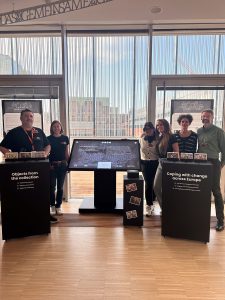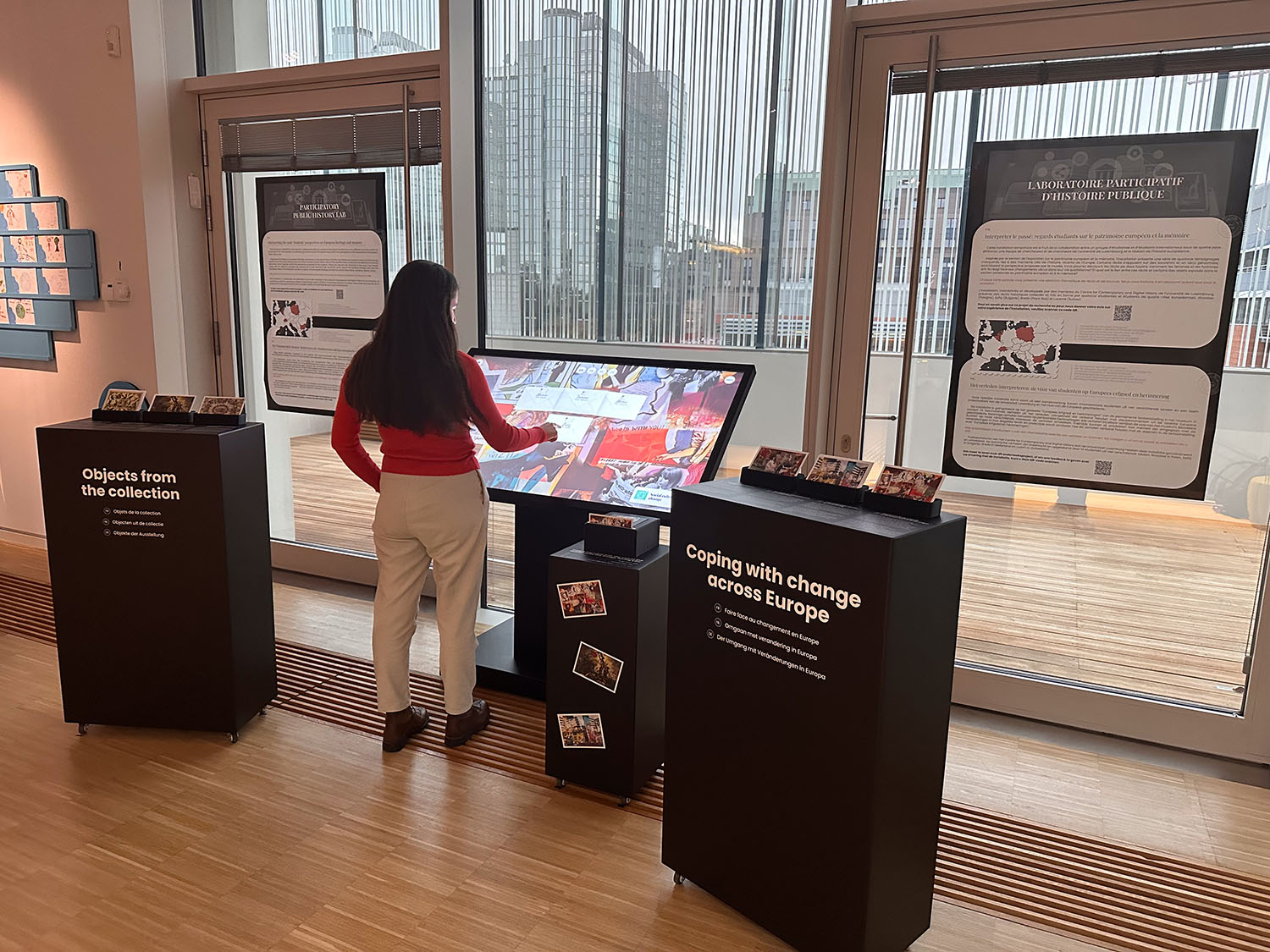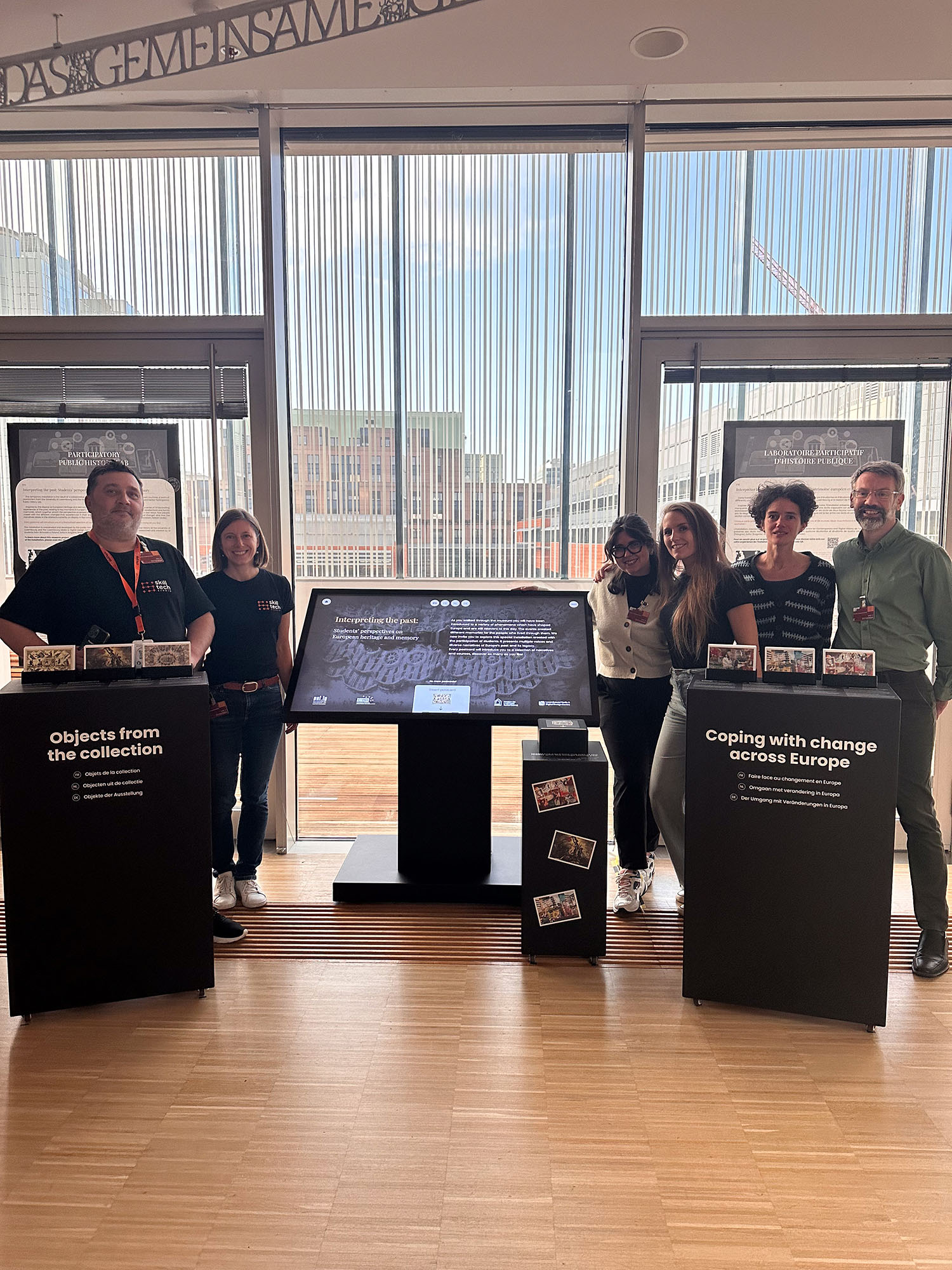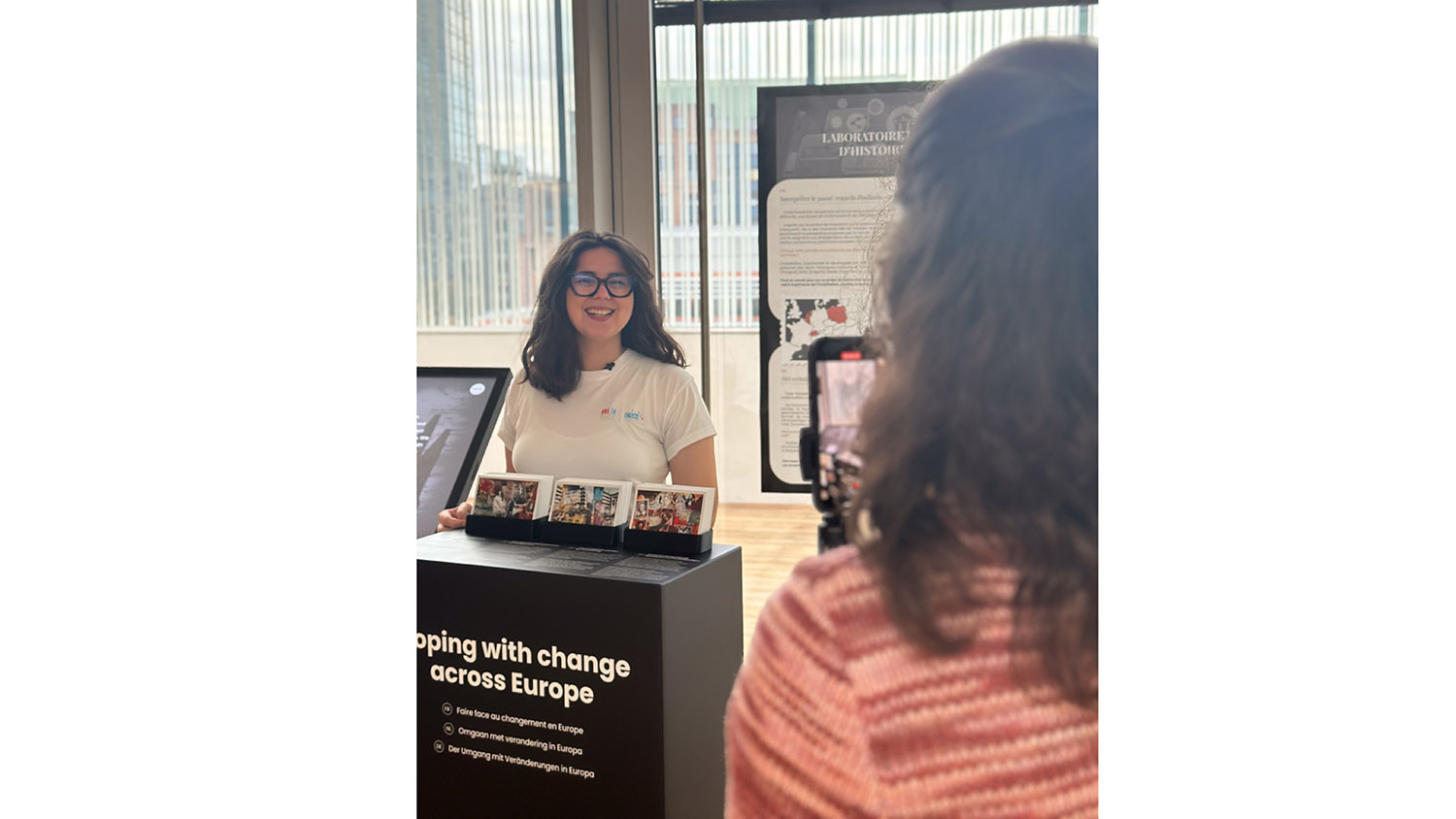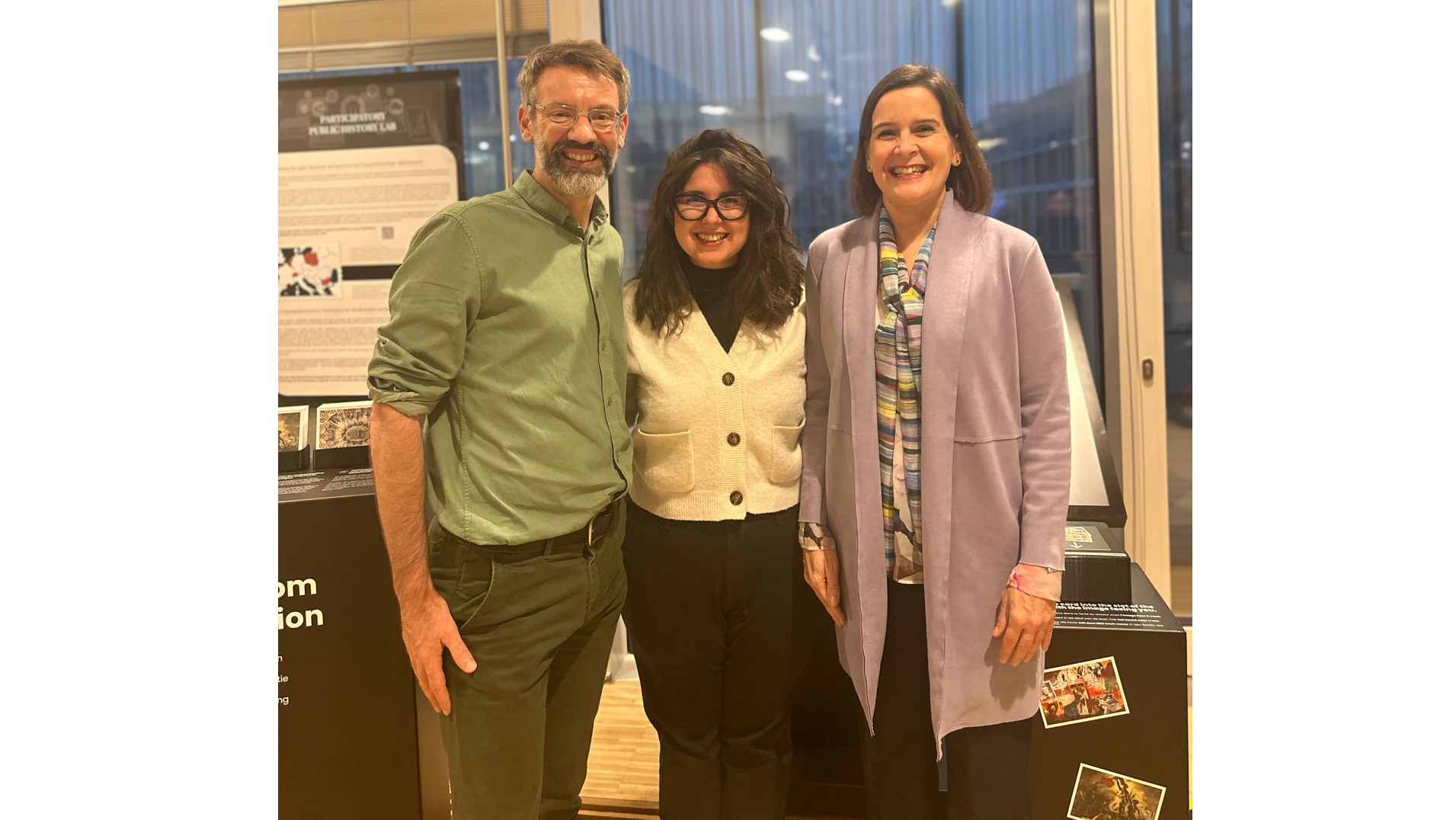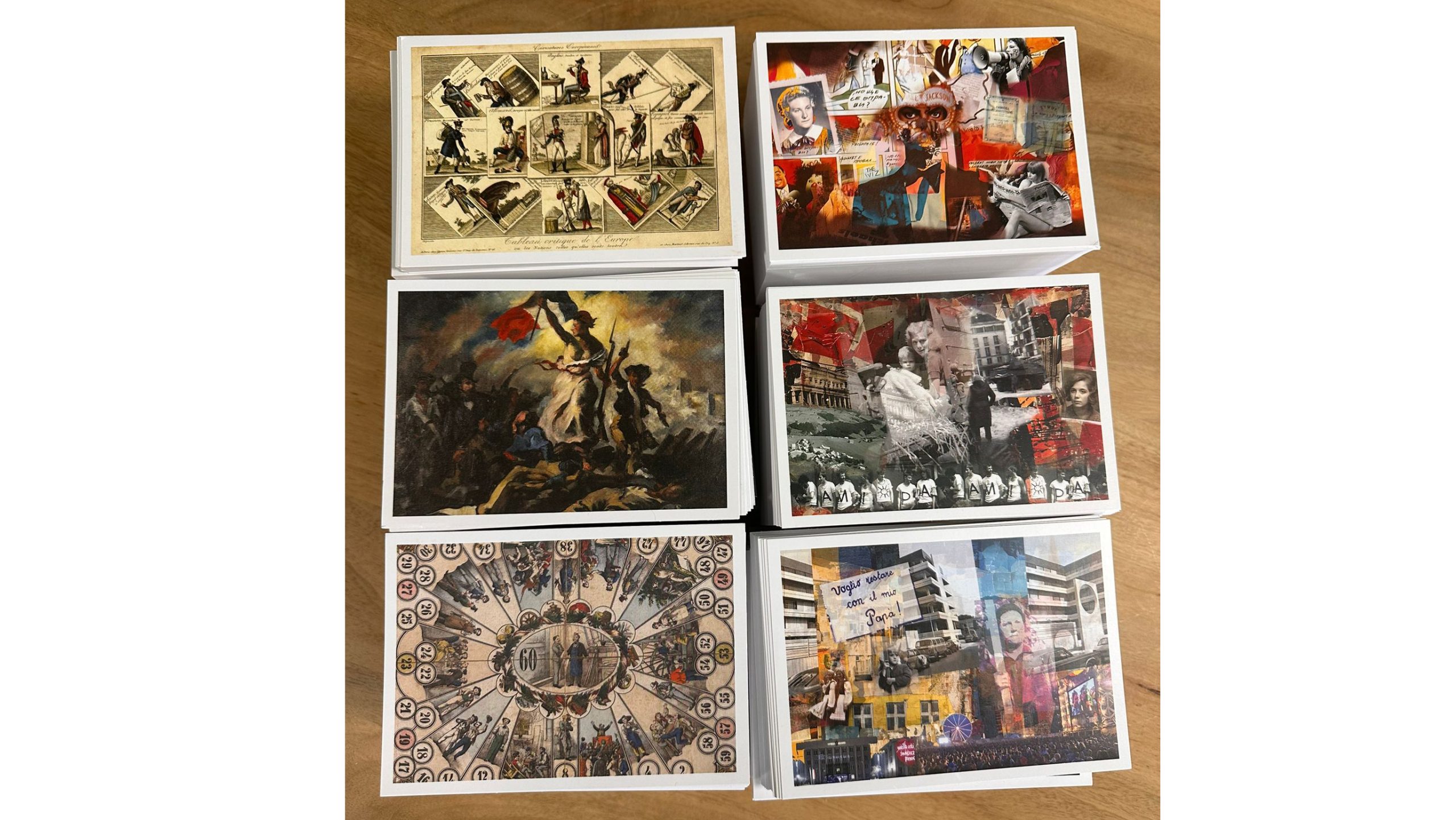How to develop and implement public participation in history museums to enrich existing narratives and bring more diversity to the content proposed? To investigate this question, the PHACS Team inaugurated a temporary interactive installation at the House of European History in November 2024.
The Public History as the New Citizen Science of the Past (PHACS) project held at the C²DH, develops public history practices and participatory models to interpret the past. Focusing on the production of history with a public perspective, this project, led by P.I. Prof Dr Thomas Cauvin, aims to facilitate interactions between academics, cultural institutions, groups, associations, and the general public to contribute to a democratisation not only of access but also of the production of history.
Within this framework, PhD Candidate Camilla Portesani, Prof Dr Thomas Cauvin and Dr Violeta Tsenova worked towards a creating a pilot project in collaboration with the House of European History (HEH): the Participatory Public History Lab (PPHL).
Together they posed the question of how to develop and implement public participation in history museums to enrich existing narratives and bring more diversity to the content proposed.
To explore this, Portesani and her colleagues developed a new participatory methodology to foster transnational collaborative history-making. This project stands as the main case study of Portesani’s PhD dissertation as she strives to analyse the project from the perspective of a public historian and researcher, but also as project manager.
For this collaborative effort, 14 university students form across Europe came together to reinterpret objects from the HEH’s permanent collection.
Through different kinds of sources and assets, and by learning how to interpret them, the participants contributed new, distinct historical narratives, adding diverse voices to the museum’s discourse. Inspired by the objects from the European Heritage and Memory display in the House’s permanent collection, the students’ narratives are based on more personal recollections or interpretations or family archives.
An interactive temporary installation presenting this series of fascinating interpretations of the past waits for you on the 6th floor of the museum. Developed with the support of and Dr Myriam Dalal and the Luxembourg Media & Digital Design Centre (LMDDC), it will be on the museum’s premises until February 2025 and we invite you to discover these stories relating to key moments of Europe’s contemporary history and to be part of this experiment with public participation.
We hope to welcome you very soon at the museum and hear what you think about our work through the survey also available via QR code at the House of European History in Brussels!
Please get in touch with us if you’d like to learn more about this participatory pilot project at phacs@uni.lu
The participants of the PPHL project are:
- Agata Bielecka, University of Wroclaw (Poland)
- Anna Jawień, University of Wroclaw (Poland)
- Christina Nanz, Pädagogische Hochschule Luzern (Switzerland)
- Evy Hinten, Breda University of Applied Sciences (the Netherlands)
- Jakub Jędrusik, University of Wroclaw (Poland)
- Kacper Kołodziej, University of Wroclaw (Poland)
- Karolina Piszczałka, University of Wroclaw (Poland)
- Lilian Dutoit, Pädagogische Hochschule Luzern (Switzerland)
- Lyuboslava Hristova, Sofia University St. Kliment Ohridski (Bulgaria)
- Maria Getova, Sofia University St. Kliment Ohridski (Bulgaria)
- Marie Jacobs, Breda University of Applied Sciences (the Netherlands)
- Olena Banaś, University of Wroclaw (Poland)
- Tommaso Dal Maso, Breda University of Applied Sciences (the Netherlands)
- Viktoria Rolanska, Sofia University St. Kliment Ohridski (Bulgaria)
